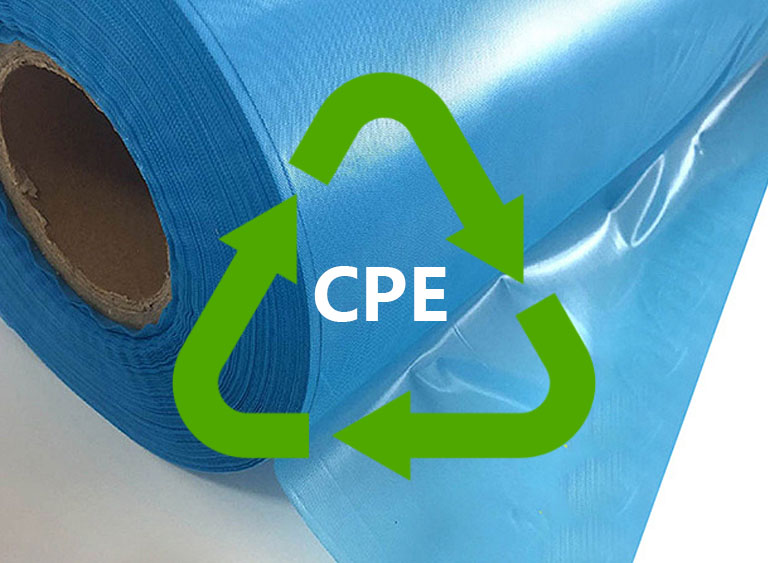CPE film is a popular type of plastic film that is used in a variety of industries. This film is made from a blend of polyethylene and ethylene vinyl acetate, which gives it a unique combination of properties. If you have CPE film scraps that you want to recycle onsite, there are two main options to choose from: the traditional water cooling plastic granulator production line or the new-tech air cooling plastic granulator machine.
What’s CPE film?
CPE film is a type of plastic film that is made from a blend of polyethylene and ethylene vinyl acetate. This film is known for its unique combination of properties, including flexibility, durability, and resistance to moisture and chemicals. CPE film is used in a variety of industries, including food packaging, medical packaging, and construction.
How is CPE film made?
CPE film is made by blending together polyethylene and ethylene vinyl acetate in a hot melt extrusion process. The resulting blend is then flattened and cooled to create a thin film. This film can be further processed and treated to create specific properties, such as improved heat resistance or increased flexibility.
How do CPE film scraps happen?
CPE film scraps can happen for a variety of reasons, including manufacturing defects, improper handling, or excess material during the production process. These scraps can be a source of waste and environmental pollution if not properly disposed of or recycled.
What are common defects of CPE film or unqualified film?
Common defects of CPE film or unqualified film include poor sealing performance, uneven thickness, wrinkles or creases, and poor printability. These defects can reduce the performance and usability of the film, making it unsuitable for certain applications.
What common products are made of CPE film?
CPE film is used to make a wide range of products, including food packaging, medical packaging, disposable gloves, raincoats, and construction materials.
The advantages and disadvantages of CPE film
CPE film has several advantages, including its flexibility, durability, and resistance to moisture and chemicals. However, it also has some disadvantages, such as its relatively high cost and difficulty in recycling.
How to do onsite CPE film recycling: the traditional water cooling plastic granulator production line
The traditional water cooling plastic granulator production line is a common method for onsite CPE film recycling. This process involves feeding the CPE film into a granulator, which uses water to cool and solidify the melted plastic before cutting it into pellets. These pellets can then be used to make new products or sold to recycling companies.
How to do onsite CPE film recycling: the new-tech air cooling plastic granulator machine
The new-tech air cooling plastic granulator machine is a more advanced method for onsite CPE film recycling. This machine uses a screw to crush the CPE film and extrude it into strands, which are then cut into pellets as they come out of the extruding mold. The cut pellets are then cooled down via a consistent air flow generated by one or more blowers. This process is more efficient and environmentally friendly than the traditional water cooling method, as it uses less water and produces less waste.
Conclusion
CPE film is a versatile and widely used plastic material, but the production and disposal of CPE film scraps can pose significant environmental challenges. Onsite recycling of CPE film is an effective solution that can help reduce waste and minimize the environmental impact of CPE film production.
Traditionally, water cooling plastic granulator production lines have been used for onsite recycling of CPE film. However, the new-tech air cooling plastic granulator machine offers several advantages over traditional methods, including faster processing times and reduced energy consumption.
Regardless of the recycling method used, it’s important to properly sort and prepare CPE film scraps to ensure the highest quality of recycled pellets. By taking these steps, businesses can reduce their environmental impact and contribute to a more sustainable future.

